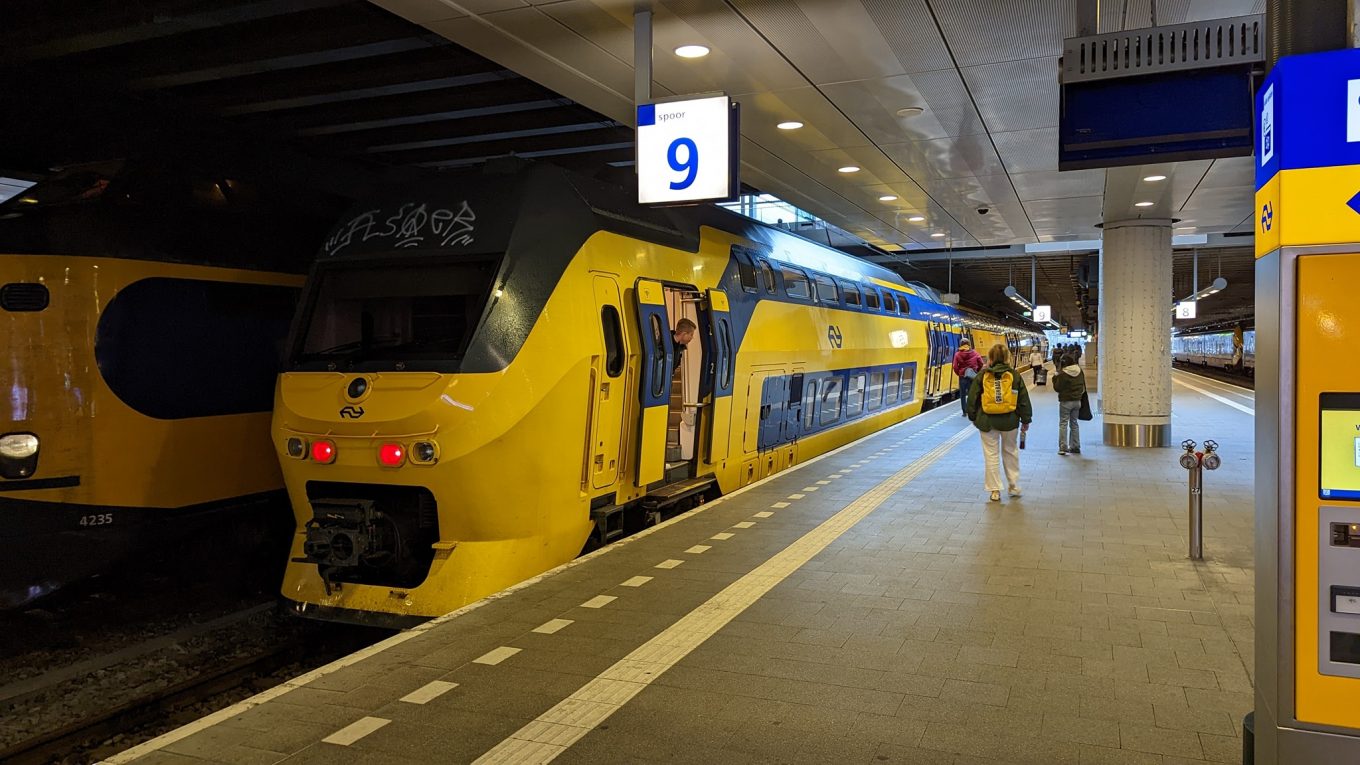The railways of The Netherlands: My first impression
I briefly visited The Netherlands in 2019 whilst on a cruise so when the opportunity to return for a work trip presented itself, I jumped at the opportunity. Whilst attending World Passenger Festival in Amsterdam, I also took some time to explore the railways and here are my first impressions.
Rolling Stock

There was an interesting variety of both old and new mainline rolling stock operated by NS, the national operator for The Netherlands. Most Intercity trains are operated by electric multiple units (EMUs) in the iconic yellow and blue livery, and I sampled both single and double deck varieties. Double-deck trains really impressed me, it was a really interesting use of space. I also tried one of NS’s locomotive hauled trains on the Intercity-Direct service between Rotterdam and Amsterdam.
The Intercity trains had a quiet area, but the signs were very small so I think this could’ve been better labelled. Generally speaking though, these areas seemed to be well respected.
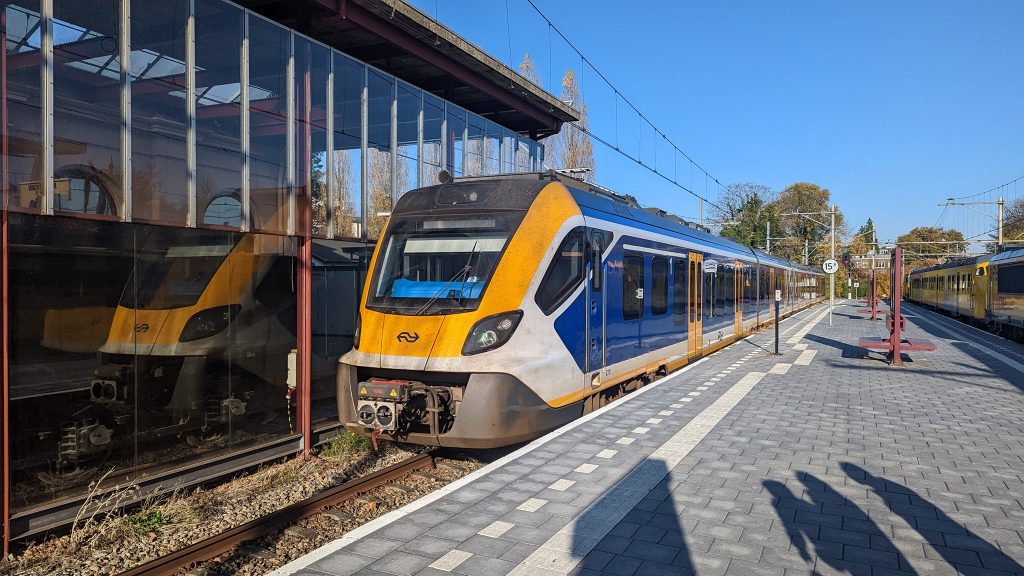
Stopping services are branded as ‘Sprinter’ and operated using smaller EMUs. These appeared to be much newer than the Intercity trains, and were coloured white, blue and yellow so easily distinguishable.
Compared with trains in the UK, there were several differences of note. The leg room seemed much more generous, and whilst there were definitely less dedicated luggage racks available there was much more space between and below the seats for the stowage of bags and cases. Also, the seating was comfortable, but a different material to that in the UK which presumably makes them easier to clean but isn’t as nice to touch.


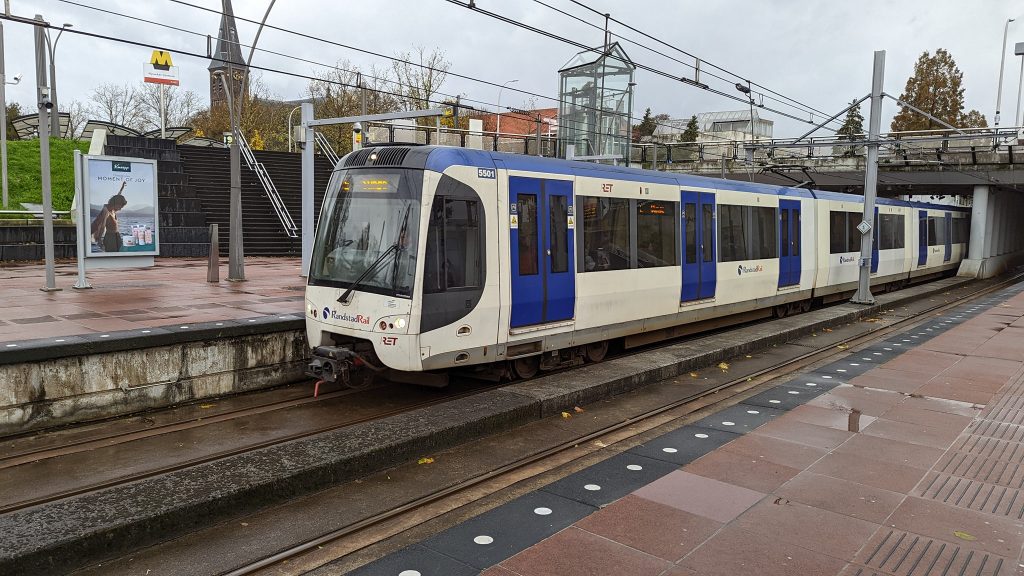
I also tried several metro lines. I didn’t like the seats at all on the metro trains in Amsterdam as they were hard plastic – much more hard-wearing of course, but incredibly uncomfortable (although thankfully none of the lines in Amsterdam are very long). The trains operating the Metro service between Den Haag and Rotterdam were more comfortable. Both systems operated a frequent and seemingly reliable service.
Railway Stations
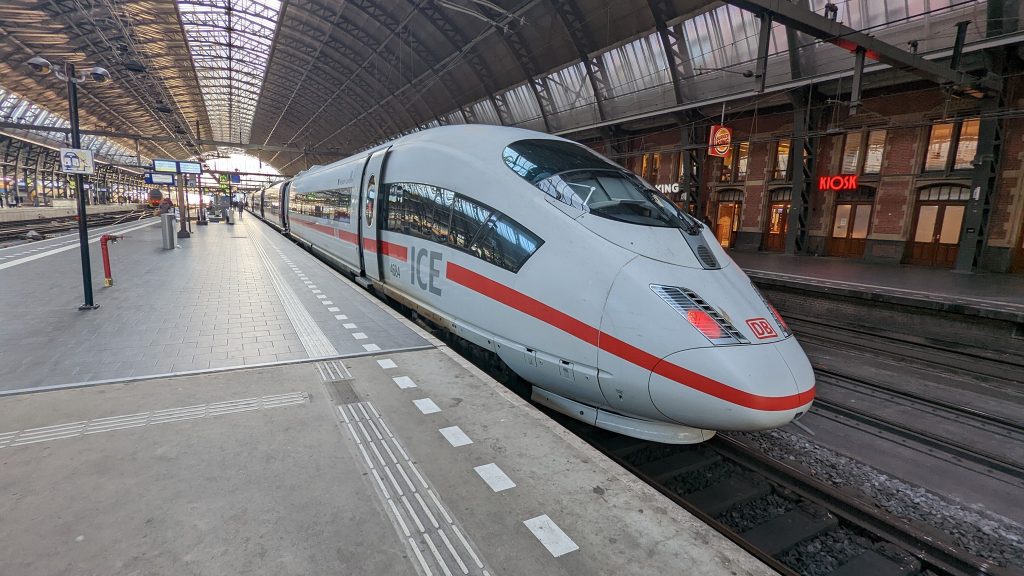
All the railway stations I visited in Amsterdam, Rotterdam and Utrecht were clean, spacious and easy to navigate. There were plenty of places to sit, and the larger stations had a good selection of shops and places to eat.
A huge difference I noted when comparing railway stations in The Netherlands with those in the UK was the lack of any staff manning the ticket barriers. Instead, a push-button intercom system is provided and staff working remotely can let you through if there’s a problem. I think this works really well at smaller stations because it means that gatelines can be provided to improve revenue protection where it might not otherwise be possible. But I think they should be staffed at larger stations because of the increased flow of passengers and the number of queries that this brings.
Ticketing & Fares
The fares weren’t particularly cheap, but weren’t frighteningly expensive either. One thing to note is that paper tickets purchased from ticket offices or vending machines are more expensive because of their environmental impact. But there are several options to avoid this charge.
NS have a really good app which allows the purchase of e-tickets and this is how I got the majority of mine. The app was available in English as well as Dutch, and provided the carriage number of your train which was really reassuring because you could check this as you boarded to make sure you were on the right one. My only complaint with the app was that the service disruption information wasn’t translated into English like everything else, but luckily I wasn’t involved in any major delays or cancellations.
Another option is to purchase an OV-Chipkaart, a plastic smartcard which can be topped up with pay-as-you-go credit as well as holding period and season tickets. A Chipkaart is a really good option for using Metro and Tram services, but I wouldn’t recommend them for mainline train journeys for which you just need a single or return. You need a balance of at least €20 to enter the system which for many journeys is considerably more than the fare. I understand the requirement of this is to deter fare evasion by not touching in or out, but it is frustrating – particularly when at one station I exited through a gateline looking for the left luggage facility, then couldn’t re-enter when I realised it was behind me as my balance was too low.
Accessibility
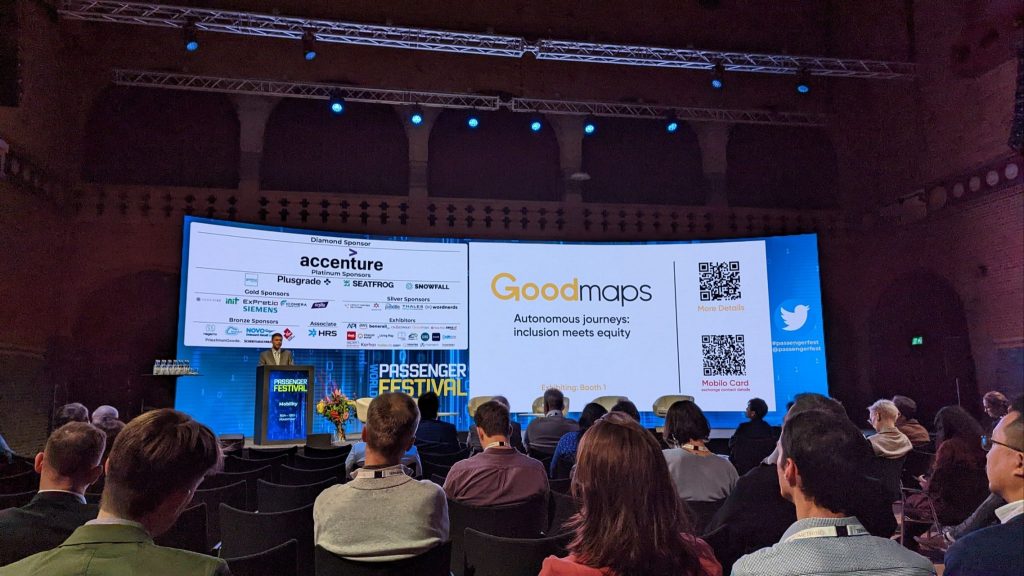
As previously mentioned, the purpose of my trip was to attend World Passenger Festival on behalf of my employer as there was a big accessibility focus this year. Neil from GoodMaps Inc. did an inspiring keynote speech about how blind and partially sighted people are impacted by issues on public transport. It was also interesting to hear how companies such as NS, Irish Rail and several others are improving accessibility for their customers.
Being in The Netherlands also gave me the opportunity to see differences between the accessibility of stations and trains in the UK with those in another country and I think there are good and bad points for both.
One of the biggest differences I noted was the lack of automated announcements and information screens on board trains. The newer Sprinter fleet had a good automated PA system which announced everything in Dutch, and major stations in English too. But the older Intercity fleets relied upon the Conductor making announcements which were sometimes very difficult to hear. The lack of screens also made this challenging, so I relied on the NS app a lot and checking my location on Google Maps.
There was also very little in the way of level boarding. The Intercity fleets often had steps to negotiate when boarding the train which would be very difficult for people with mobility issues. The newer Sprinter trains were much better for this, and some even had steps which automatically extended when the doors opened. Greater Anglia have these on their FLIRT trains (see my video review here) and I hope that this emerging technology can become more widespread in both countries as fleets are replaced over time.
I am registered blind and as a result I also found colour contrast difficult in The Netherlands. In the UK, we have strict rules about the colour schemes on the exterior of our trains which mean the doors need to be a different colour to the rest of the carriage to make them easier to see. Its not like that in The Netherlands, and I also found it difficult to locate the buttons to operate the doors because they aren’t very big or well positioned on some of the Intercity fleet.
Tactile paving also differed a lot to that in the UK. Stations in The Netherlands almost always had tactile ‘pathways’ to follow which made moving around within stations really easy – we don’t really use these in the UK. If you rely on tactile paving and you’re travelling from the UK to The Netherlands, its worth noting that the patterns used over there are different. For example, the pattern used to mark a platform edge in The Netherlands is more similar to what we use in the UK to mark a flight of stairs.
